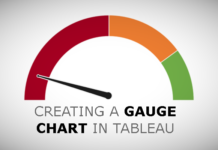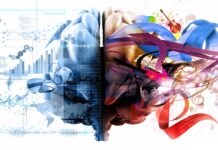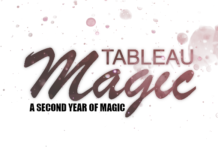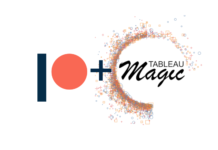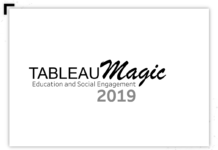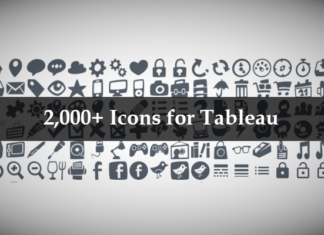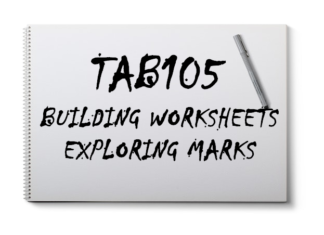“Colors are perhaps the visual property that people most often misuse in visualisation without being aware of it“.
Robert Kosara, Senior Research Scientist at Tableau Software
In my last blog article, I wrote about 5 most common mistakes in data visualisation. However, I didn’t mention the using of color as a mistake. There is so much going on with color and I couldn’t explain it in a short in my last blog post. Thus, I dedicate a whole blog article for this topic. (The occasion to speak about this topic was an excellent possibility. Thank you, Divya for the invitation!) I go through some basic definitions and also, I describe in five steps how you can make your color choice for your design. Let’s get it started.
First and foremost: Why color is a difficult topic?
- You don’t learn about the application of color (as for data visualisation needed) at school or later. You need to understand how people perceive colors, how to use them for data visualisation effectively and what is the approach by selecting a color.
- The knowledge about the color you should either acquire on yourself or study graphic design or similar.
- With color, you can express your emotions. On this screenshot, you see the color nodes that reflect different emotions. The network structures emphasize which colors are
highly connected, which are outliers. For more information check this study: Affective Color in Visualisation.
- In different cultures, color has a different meaning. In China, for example, red stays for happiness (something positive). In western countries red stays for danger (something negative). The white colour symbolizes Happiness for native American, in China it stays for death and so on. (For more information to this topic, check this color wheel). This makes the application of colour difficult.
What are the consequences of misapplication of color?
You run a risk, to create an illusion if you use color wrong. I mean to use wrong colors for foreground and background (I speak about this point later in this blog). You really need to be aware of these as a consequence of your color choices.
Basic Definitions
Which Basics You Should Know About Color?

Before you start working with color, you should first know, if you create a work for a print or computer display. This is important, as you will work with different color models. For a computer display, you will work with RGB or HEX color model. If you create a work for a print, you should use CMYK model.
For example, in Tableau, you have this color selector. In this selector, you have the possibility to choose a color with three different models.
What do these color models mean?
RGB (Red, Green, Blue) color model is an additive color model in which red, green and blue light are added together in various ways to reproduce a broad array of colors. The main purpose of the RGB color model is for the sensing, representation, and display of images in electronic systems, such as televisions and computers.
HEX (Hexadecimal) color model expressed as a six-digit combination of numbers and letters defined by its mix of red, green and blue (in form #RRGGBB using codes 00 to FF). The range of this model go from black (#000000) to white (#FFFFFF). The color red is coded as #FF0000, green as #00FF00 and blue as #0000FF. Designers and developers use HEX colors in web design. A HEX color code is a shorthand for its RGB values with a little conversion.
CMYK (Cyan, Magenta, Yellow, Black) printing is the standard in the printing industry. CMY covers most light color ranges while K gives it the ability to create darker deep colors. CMYK color has a wider range of colors though is limited compared to the RGB color profile.
HSL Model (Hue, Saturation, and Lightness): Working with color, you should also have a good understanding of the HSL model devised by Albert Munsell in 1980s. HSL stays for Hue, Saturation and Lightness. I’ll not go deeper into the theory. At this point, It is just important to know what these definitions mean. More to this model you can read here:

Hue is a true color without any shades, tints, and tones.

Saturation refers to the intensity of color. Saturation expresses one color in different bandwidth from light to dark. This does have a scale from intense pure color (high saturation) through increasing tones (adding grey) to the no color state of grey (low saturation).

Lightness shows the contrast of one color from light to dark.
That’s enough about the basic definitions. Let’s have a look at an approach for selecting a color palette.
Approach: How to choose the right color palette?
First Step: Classify the Data Types
Ones you created your chart, now it is time to choose a color for your viz. Firstly you need to classify the data types. This will help you to make a color choice.

For example Nominal (e.g. Categories: Accessories, Art, Chairs, etc.): For this data type you should use a categorical color palette, as you want to show the differences between different categories.

Categorical palettes contain distinct colors that are appropriate for fields with values that have no inherent order, such as departments or shipping methods.
Tipp: Be careful with too many categories! Too many colors decrease the demands of learning and recognition of your audience. Andy Kirk suggests two approaches to avoid this problem:
“Firstly, consider offering interactive filters to modify what categories are displayed in a visualisation – thus potentially reducing the impact of so many being available. Secondly, think about transforming your data by excluding or combining categories into reduced number aggregate groupings.”

Ordinal (e.g. Categories with hierarchy: rare, medium, well-done steak). For this data is important not only to show the differences between categories but also their hierarchy. This can be managed with a quantitative palette. Intuitive you can understand that bright colors stand for the lower rank of categories, and dark colors for the hearing one. This palette is also typical for the survey questions.
Interval (e.g. Temperature): if you want to represent both positive and negative values, use divergent color palette. This color palette consists of two different colors at the beginning and at the end. Thus, it gives you the possibility to show you two different directions.

Second Step: Context’s Hints
Pay attention to your context when choosing colors! Your context gives you usually hints for the colors. For example, if you have data about:
- Olympic medals (which are usually: gold, silver, bronze): Your color choice should be yellow, grey and brown (or similar).
- Forest or woods: Your color choice should be green and brown or similar tonalities
- Water: Usually you use a lot of blue or turquoise as a color
Also, think about the emotions by the data: if you work with data represents Happiness as emotion, you use bright colors, by sadness – dark colors.
Third Step: Editorial Salience
Define what you want to tell with your visualization. Think about, what information you want to push to the background (not relevant) and what information to the foreground (relevant).
How to do this? Use your knowledge about preattentive attributes. For example, with grey, you can push the unnecessary information to the background. Using blue or other contrast colors for important information you put information to the foreground. With this trick, you create a contrast. See this example (Visit the page to see the whole design):

This is an excellent example of the using of color. The authors have drawn the audience’s attention to one character with a signal color: orange. They used color sparingly and highlighted information effectively. All other information is represented by grey. Grey helps create depth. Elements colored in grayscale sit quietly at the back of the view, helping to provide a deliberately subdued context that enables the more emphasized colored properties to stand in the foreground. Another important point on this viz is consistency: the authors used color consistently (orange for Boris Becker). Thus, they keep the audience’s attention and it is easy to read.
Fourth Step: Find Your Color Palette
Now you have enough information about your visualisation, so it is time to find your color palette. I’d like to share with you some resources, which always helps me:
I’d advise you to test as many color palettes as possible until you find the one.
I want to share my last example for great color usage:

The author used here 11 colors. It is a lot, but it is a good choice to represent this data. The visualisation doesn’t look overwhelming. It looks elegant. There is effortless harmony here between the color choices extending across the entire anatomy of design: the petals, branches, labels, titles, legend, and background. This visualisation shows, that you must judge the overall balance of and suitability of your collective color choices and not just see these an isolated selection. I also like the white background: it gives viewers to perceive different colors effectively.
Fifth Step: Squint Test
Before you deliver your design, run the squint test. Take a step back (make a short break) and squint your eyes for a moment. The design should become blurry and only the largest, most basic shapes of the interface should be able to be perceived. The purpose of this is to get a high-level view of the visual hierarchy of your work. Look at your work: does the message come out what you wanted to say? Or too many elements confusing the eye?
Last but not least
If everything in visualization is shouting, nothing is heard!; If everything is in the foreground, nothing stands out; if everything is large, nothing is dominant.
Andy Kirk: Data Visualisation, Sources: Tableau Public: https://tabsoft.co/2oQ9Hr2
Just think about this by choosing the color. Color is important, but the chart type, typefaces, background are also important. And a good combination of all these things will make your work outstanding.

